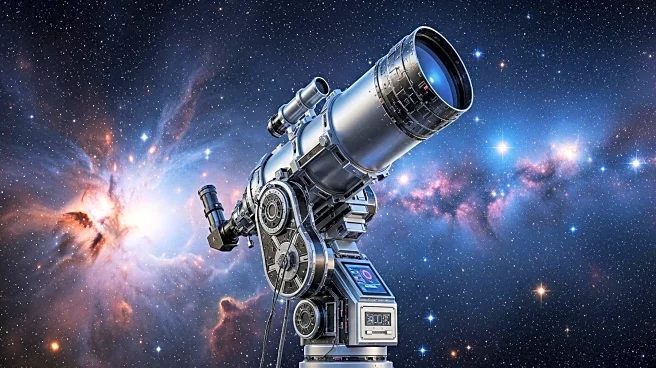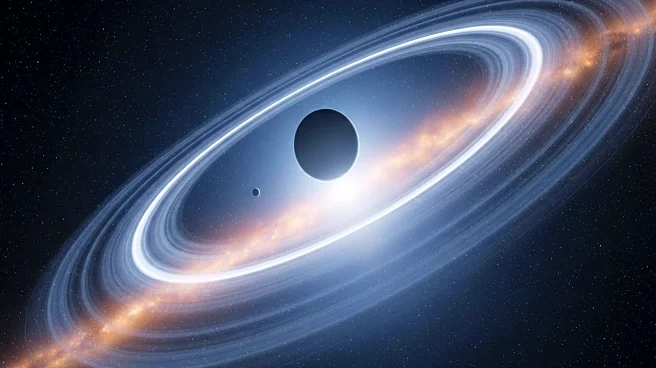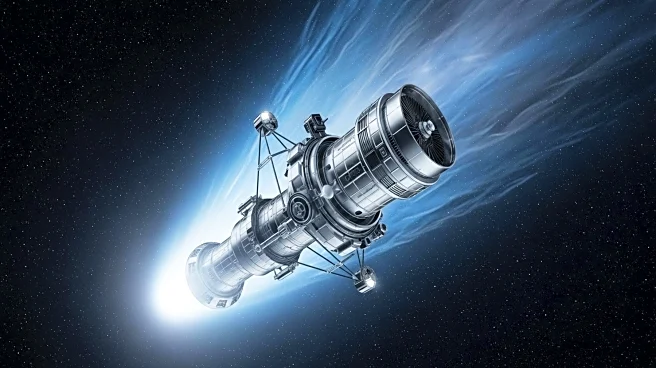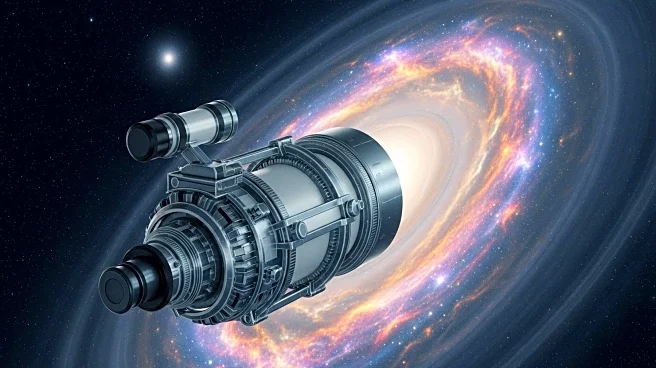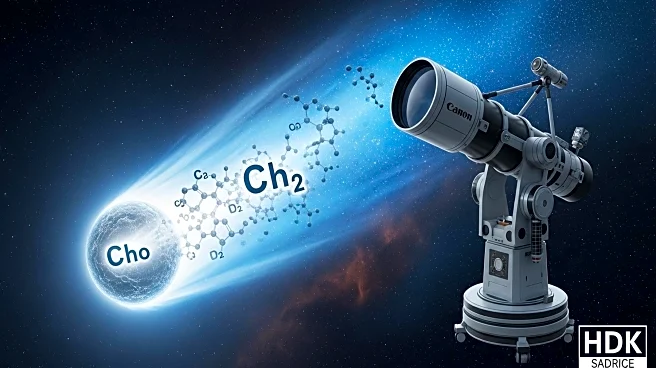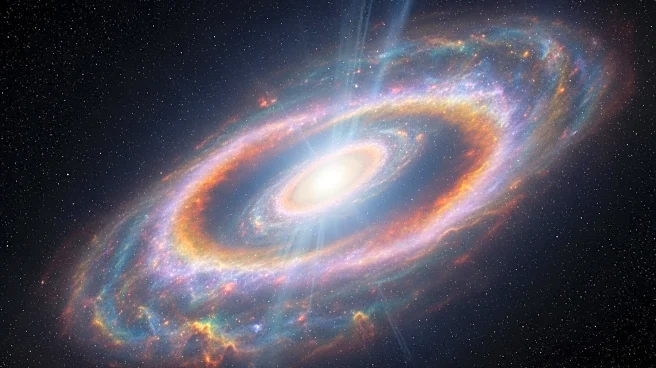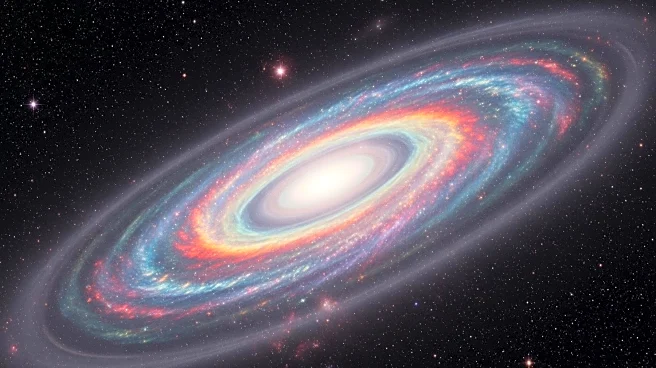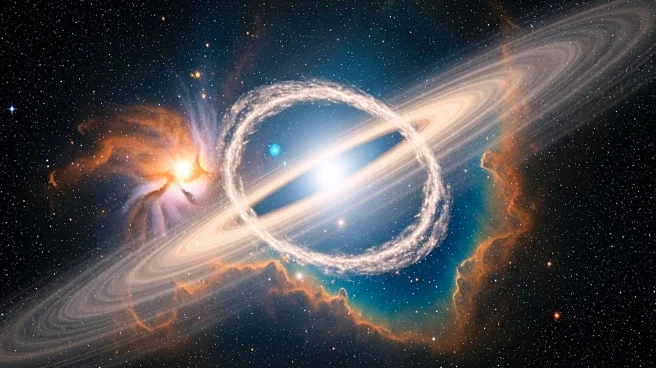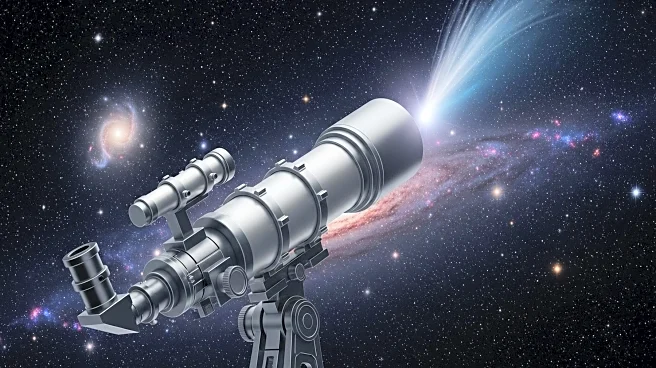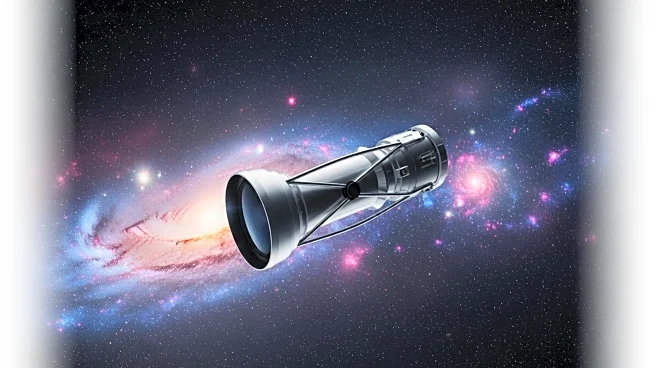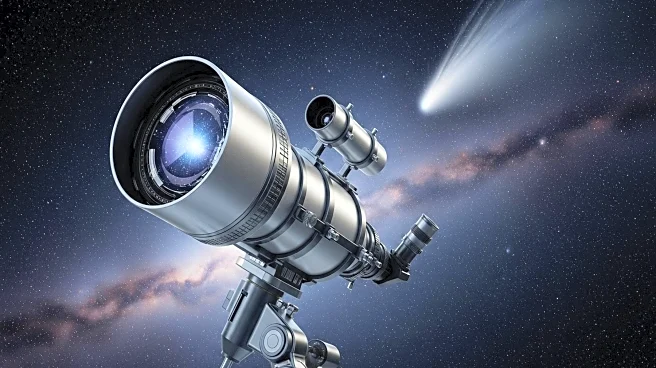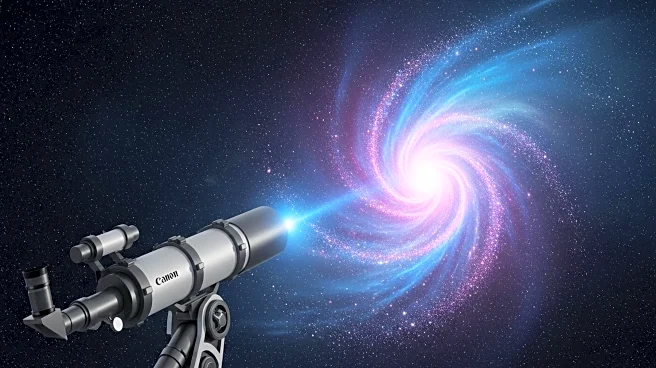What is the story about?
What's Happening?
A study led by Jenny Frediani at Stockholm University has discovered a planet-forming disk with an unusually high abundance of carbon dioxide (CO2) in regions where Earth-like planets may form. This finding, made using the James Webb Space Telescope (JWST), challenges existing assumptions about the chemistry of planetary birthplaces. Typically, planet-forming disks are dominated by water vapor in their inner regions, but this particular disk shows a strong carbon dioxide signature instead. The discovery was made in the massive star-forming region NGC 6357, located approximately 1.7 kiloparsecs away. Researchers suggest that intense ultraviolet radiation from nearby massive stars may be reshaping the disk's chemistry, leading to the unexpected CO2 levels.
Why It's Important?
This discovery has significant implications for our understanding of planet formation and the diversity of planetary atmospheres. The presence of high levels of carbon dioxide in the planet-forming zone suggests that extreme radiation environments can alter the building blocks of planets. Since most stars and planets form in such regions, understanding these effects is crucial for grasping the potential habitability of planets. The findings also offer insights into the isotopic fingerprints found in meteorites and comets, which are relics of our Solar System's formation. The ability to observe these distant disks with unprecedented detail using JWST's MIRI instrument provides critical insights into the physical and chemical conditions that govern planet formation.
What's Next?
Researchers will continue to study the impact of intense radiation fields on disk chemistry through the eXtreme Ultraviolet Environments (XUE) collaboration. By comparing these intense environments with quieter, more isolated regions, astronomers aim to uncover the environmental diversity that shapes emerging planetary systems. The ongoing development and use of instruments like JWST's MIRI will enable further exploration of distant, dust-enshrouded disks, enhancing our understanding of planet formation processes.
Beyond the Headlines
The discovery raises questions about the role of radiation in shaping planetary atmospheres and the potential for habitability in extreme environments. It also highlights the importance of isotopic analysis in understanding the history and evolution of planetary systems. The study underscores the need for continued exploration of diverse star-forming regions to fully comprehend the factors influencing planet formation.
AI Generated Content
Do you find this article useful?
